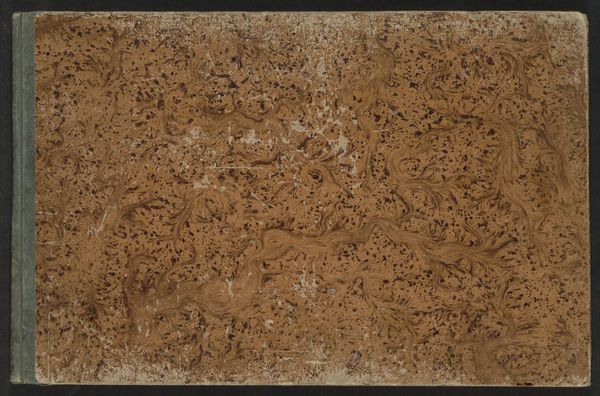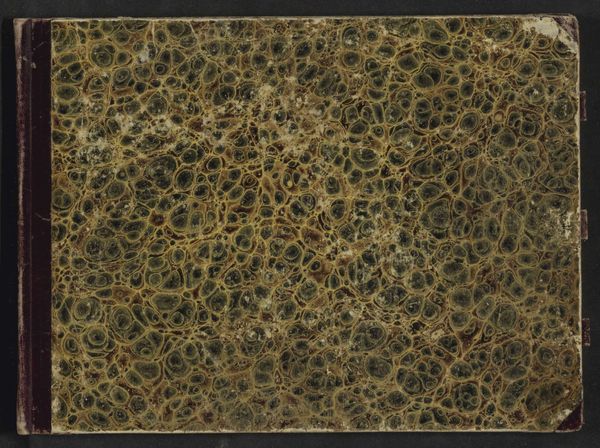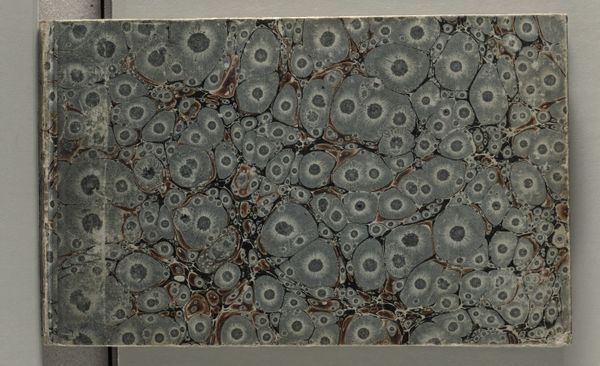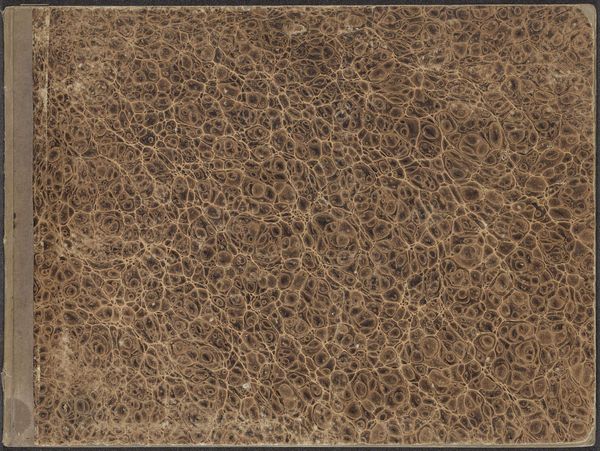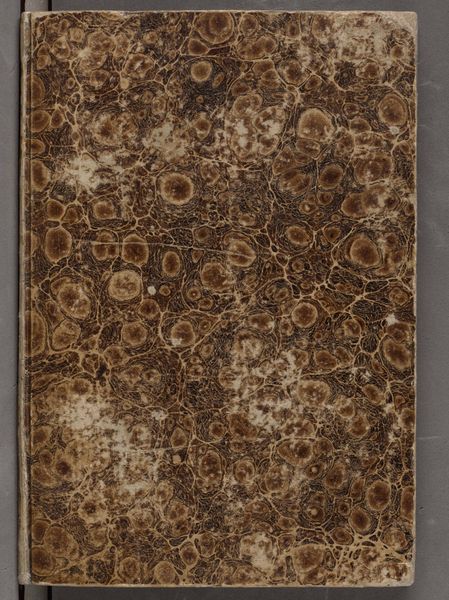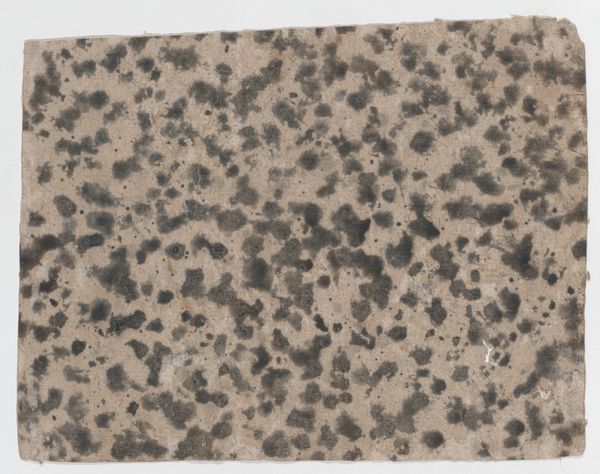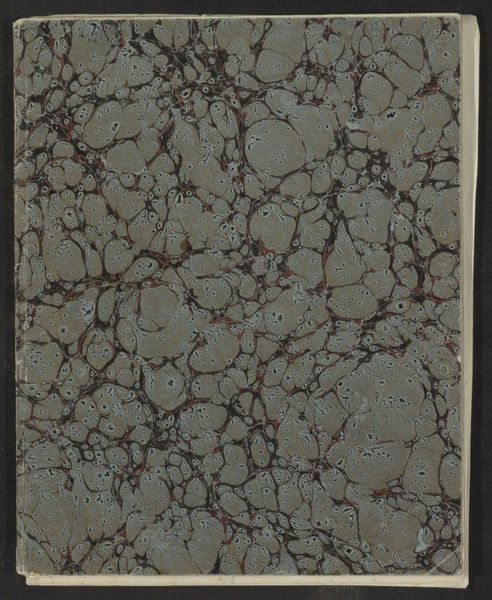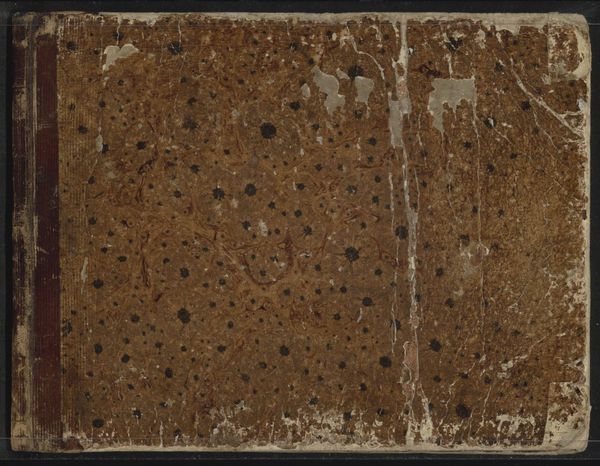
drawing, paper
#
drawing
#
toned paper
#
16_19th-century
#
paper texture
#
paper
#
decorative-art
Copyright: Public Domain
Curator: Looking at this book, "Skizzenbuch," a sketchbook by Ludwig Metz, dated 1870 and residing here at the Städel Museum, what stands out to you? The binding itself is quite striking. Editor: My immediate thought is: what a beautiful surface! It gives the impression of the earth, like a strange topographical map of some distant world. There’s a certain raw beauty here, don't you think? But beyond aesthetics, I'm wondering who this Metz was, and who would've seen this notebook? Was he known? What was his circle? Curator: Metz wasn’t widely known, and much about his practice remains to be unearthed. But what we can see clearly is the materiality here, and the skill needed to craft marbled paper. There's a physical act here--labor, even--where paper becomes art itself, a base upon which the “higher” art occurs within. Did he bind it himself? Editor: I see what you mean. And thinking of labor... This period saw burgeoning industrialization. Considering social history, who was creating fine paper and binding, under what conditions? Whose hands actually shaped it? Did they share in any of the potential symbolic value of that striking pattern? Curator: Exactly. Those production processes and specialized labor, hidden in plain sight, are essential. We can think of it as craft in transition, even art in transition, negotiating new industrial methods. Looking more closely at the mottled texture and knowing it is on paper is intriguing; is it referencing marble in its surface design? Editor: Precisely! What a rich area for critical inquiry into questions around access, status, class. In art of this era—dominated by male narratives, let’s remember—where and how might subversion or resistance find their form through "minor" acts and designs? This notebook feels loaded with untold stories. Curator: Untold stories...a poignant reminder of all that making entails, the artistic impulse alongside the often overlooked skilled hands that facilitate its emergence into the world. Thanks for lending me your insights on this intriguing little volume. Editor: My pleasure. A fresh angle on art historical conventions makes this sketchbook’s voice resonant with those from art of any age clamoring for social recognition and change.
Comments
No comments
Be the first to comment and join the conversation on the ultimate creative platform.

